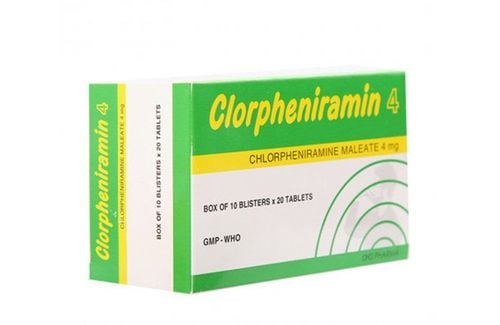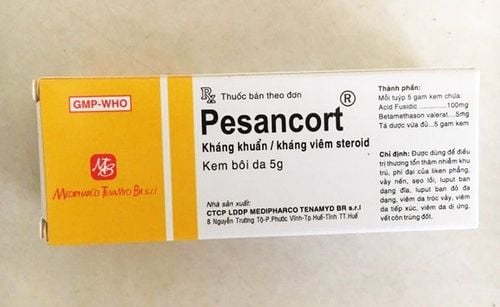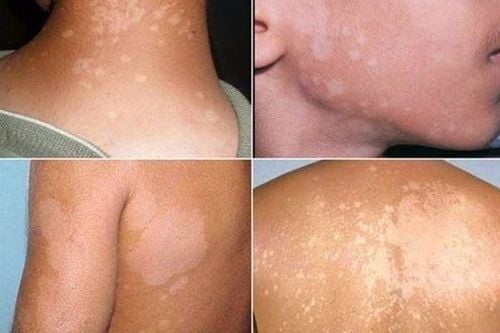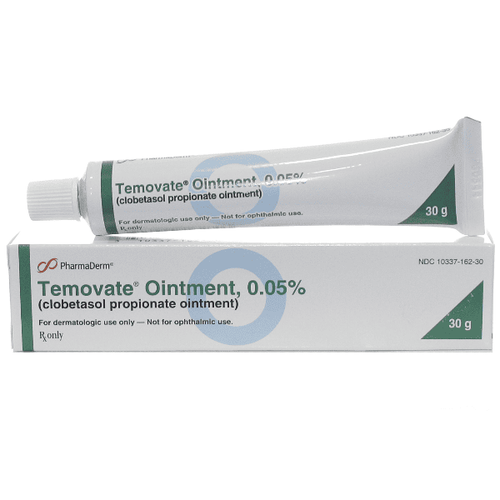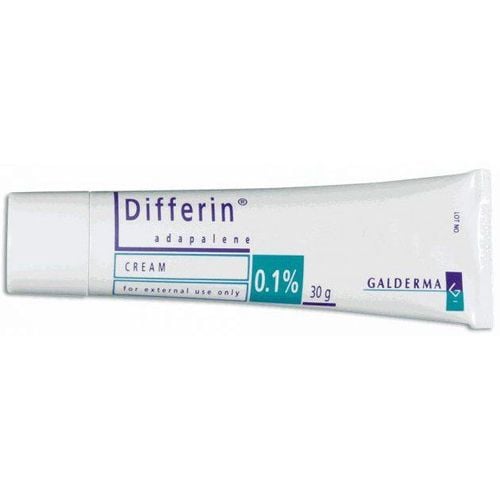This is an automatically translated article.
Exfoliative dermatitis is a disorder of the epidermis that results in the appearance of scaly patches of dead skin. The cause of the disease is quite diverse, the course is persistent, the disease can start in any object and has a great influence on the psychology and aesthetics of the skin.1. What is exfoliative dermatitis?
Exfoliative dermatitis is defined as one of the most common dermatological diseases. Regarding the pathogenic mechanism, the skin is disturbed by the activity of the epidermis, here, it will eliminate old cells and regenerate new cells continuously. This causes the surface of the skin to dry out and flake off.
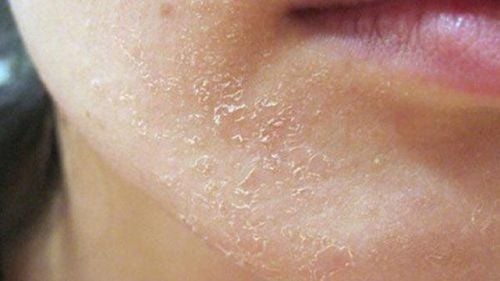
Viêm da bong vảy là một bệnh phổ biến của da
This disease is common in people with a history of autoimmune diseases such as psoriasis, atopic dermatitis.... In addition, other subjects are also at risk for this disease, but the rate is lower.
2. Causes of exfoliative dermatitis
The causes of exfoliative dermatitis are diverse and difficult to determine. According to statistics at dermatology hospitals, up to 23% of clinical cases cannot determine the cause.
Some of the following factors are thought to increase the risk of the disease:
People with autoimmune disorders : People in this group have a rate of exfoliative dermatitis up to 40%, mainly people with money history of contact dermatitis , parakeratosis , psoriasis . Abuse of topical drugs: In the treatment of dermatological diseases, overuse of therapeutic drugs can cause many undesirable effects. Improper use of the drug will make the medical condition take a long time to heal and make the skin more scaly. Therefore, when treating the disease, you should be cautious with groups of corticosteroids, penicillins, sulfonamides... People who are being treated for cancer (leukemia, lymphoma, warts...) are at risk of inflammation. Highly scaly skin: Cancer treatments such as chemotherapy and radiation make the skin dry, cracked, and less elastic. If the skin is not cared for properly, it increases the risk of infection and the formation of inflammatory skin patches.
3. Recognizing signs of exfoliative dermatitis
Exfoliative dermatitis can cause adverse reactions on the skin and body. This condition can be easily noticed with the naked eye through typical signs.
Skin symptoms:
Skin changes: Red rash, loss of essential moisture, the surface becomes rougher on body parts. After a period of time, the skin will scab a lot with redness. Some deep wound sites are at risk of ulcers, pus and constant itching, burning pain. Peeling skin surface appears in some parts, then spreads to other skin areas. The skin forms small dry scaly patches, which gradually spread into large patches and change continuously.
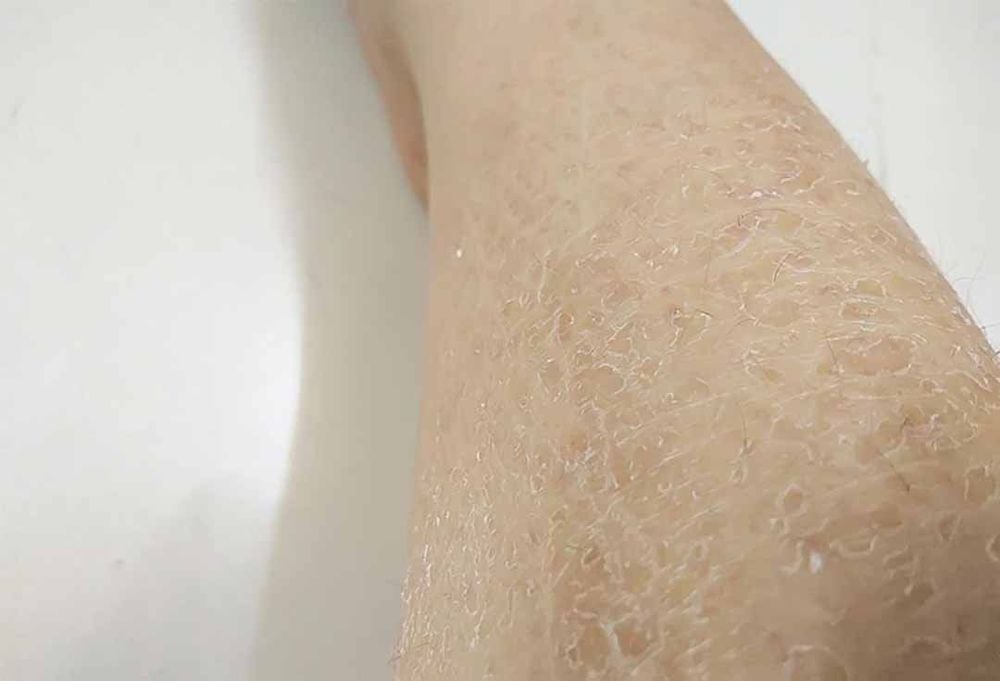
Viêm da bong vảy là tình trạng da khô và tróc ra
Changes in nails: Fingernails and toenails become thicker. The surface of the rash is tingling, uncomfortable and painful when moving strongly into the affected area. Systemic symptoms:
Exfoliative dermatitis causes fever with chills, chills similar to symptoms of flu. The reason is when the skin peels off on a large scale, causing the body to lose heat, unable to control its temperature. Some other related signs: Often feel tired due to dehydration, dizziness, dizziness due to anemia.
4. Is scaly skin dangerous?
Scaly dermatitis is not just a common dermatological disease but it is also a warning sign of many other diseases. If not detected and treated in time, the disease can develop into many different forms, which are dangerous and life-threatening.
Some dangerous complications of exfoliative dermatitis:
Heart failure, pneumonia: The skin is mainly composed of protein, when peeling continues for a long time, it will interfere with the absorption of essential nutrients for the skin. cuticle layer. Skin is dehydrated and protein, electrolyte imbalance for a long time is the cause of heart failure, acute pneumonia. Musculoskeletal and visceral infections: The skin is responsible for protecting the body from harmful factors in the external environment. When the skin is damaged, it increases the risk of infection, bacteria penetrate deep into the body parts such as bones, muscles, internal organs. Sepsis: This is one of the most dangerous complications of exfoliative dermatitis. Bacteria and viruses enter the damaged area by circulating blood throughout the body, causing blood infection.
5. How to prevent flaking skin
When you have exfoliative dermatitis, you should follow the treatment regimen of your doctor. At the same time, to prevent a lot of scaly skin, you should maintain a scientific lifestyle, reasonable exercise such as:
Regularly moisturize the skin, especially in winter. You can mix and match products that are all natural and don't contain alcohol or strong fragrances. Clean skin regularly, gently massage to remove dead skin cells. Replenish water and electrolytes for the body as needed. Provide the skin with nutrients such as vitamins, minerals... Avoid abuse of stimulants harmful to health. Limit the use of greasy foods, fast foods, preservatives and alcoholic beverages... Apply sunscreen 2-3 times a day, 4 to 5 hours apart each time to protect the skin from the sun. direct UV rays.

Viêm da bong vảy nên hạn chế tiếp xúc ánh mặt trời
Do not use clothes that are too tight or made from materials that are not guaranteed, poorly absorbent, cause surface irritation or skin itching... In short, when you notice abnormal signs on the skin as described above, As mentioned above, you should visit a reputable facility for proper diagnosis and treatment. Avoiding being subjective makes the disease complicated, difficult to treat and causes many life-threatening complications.





